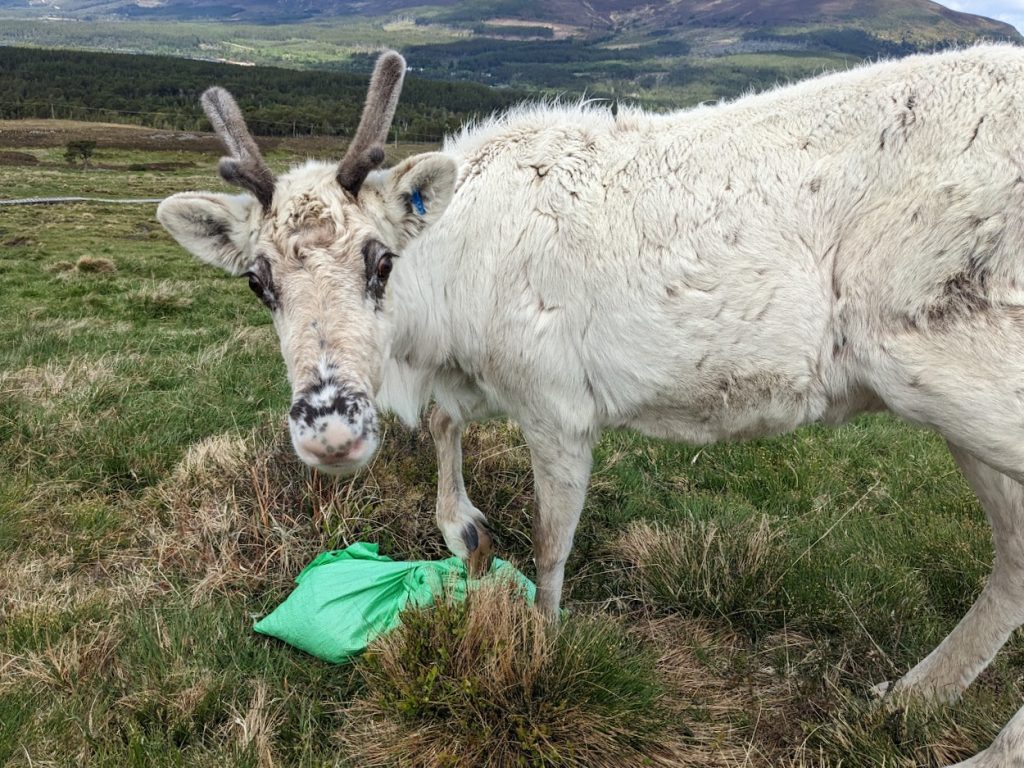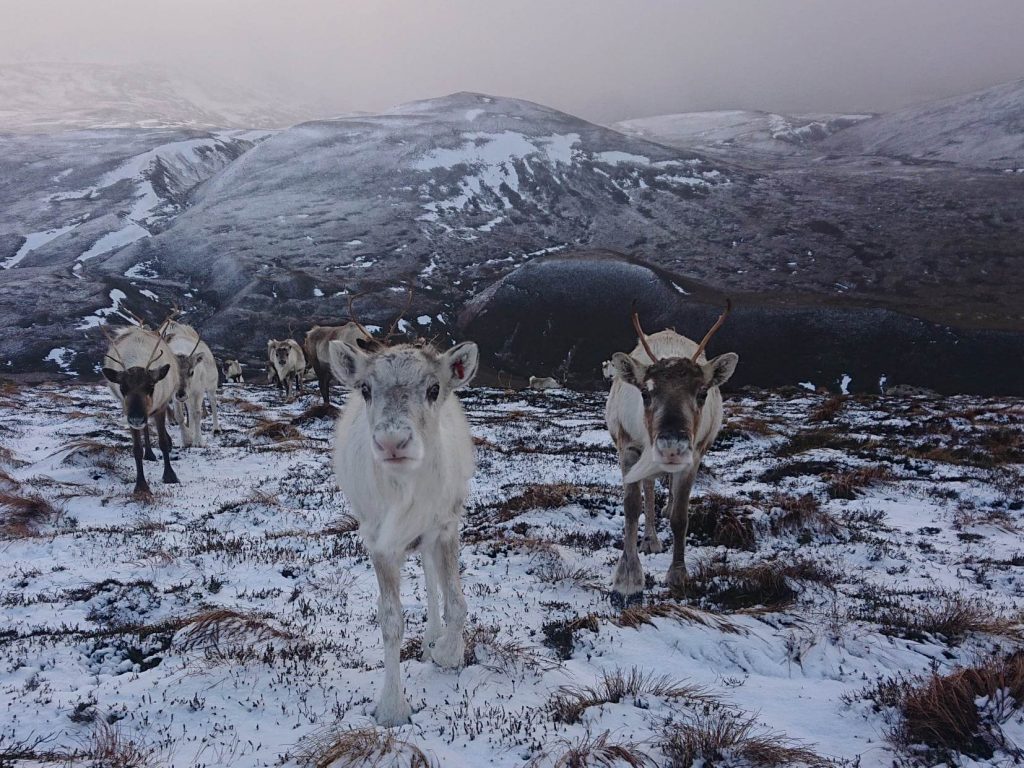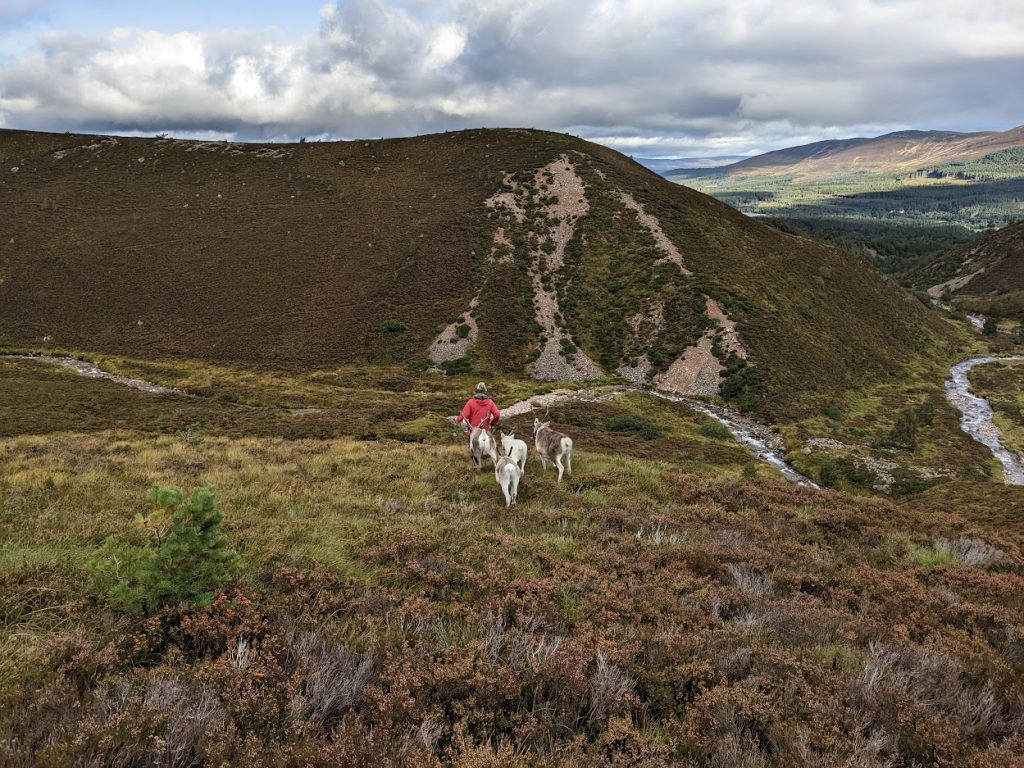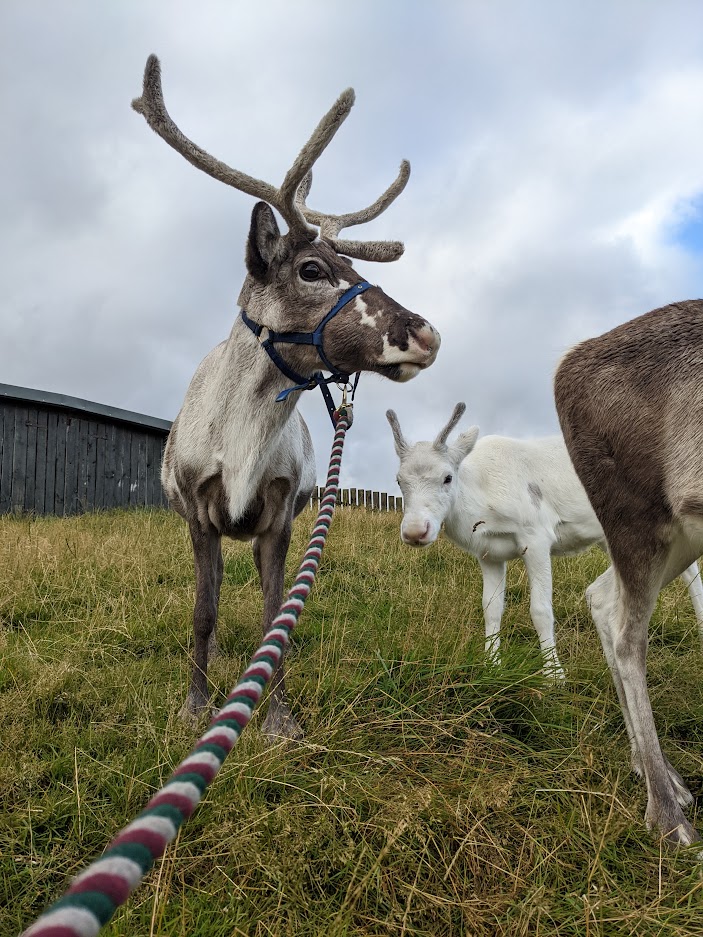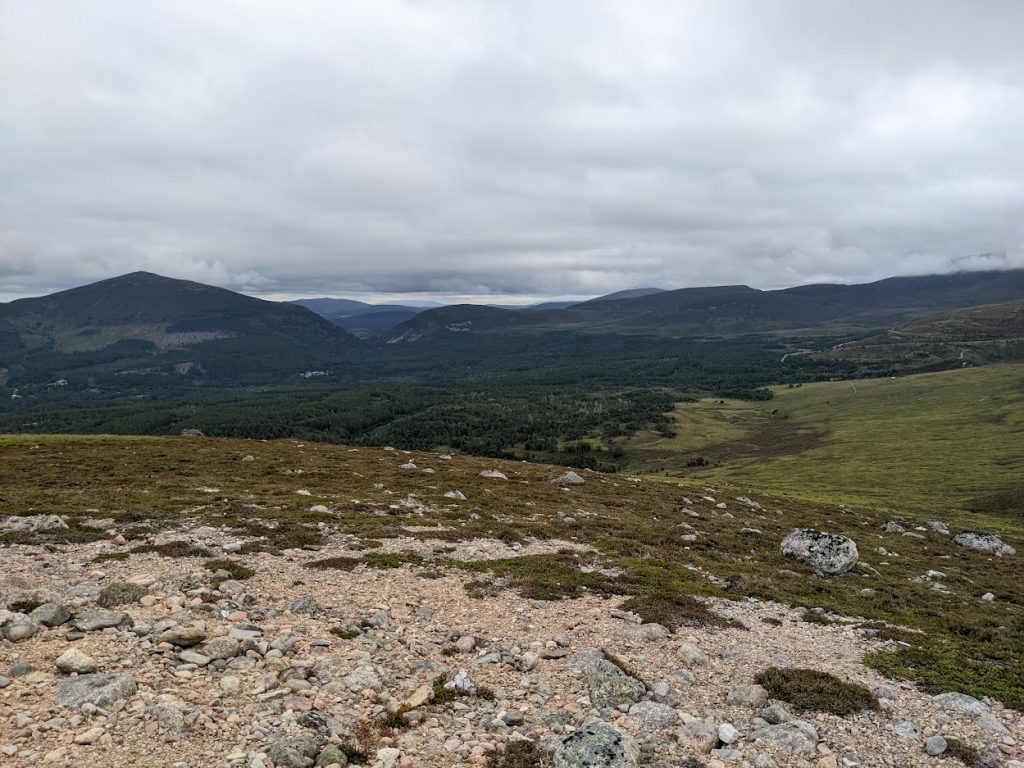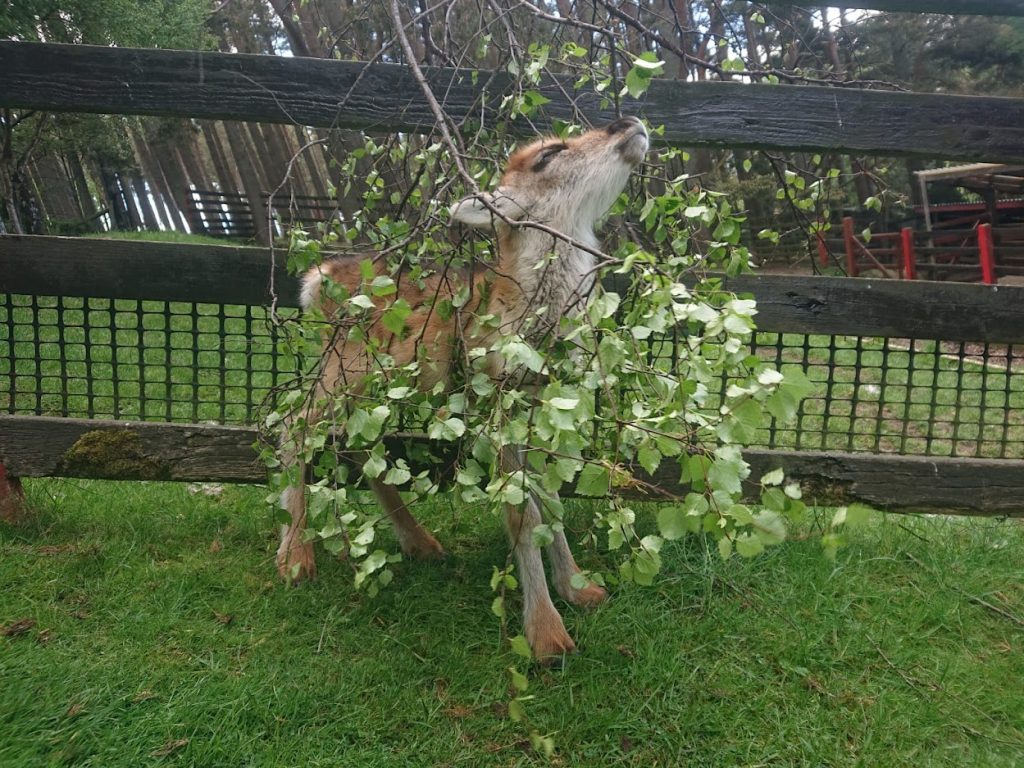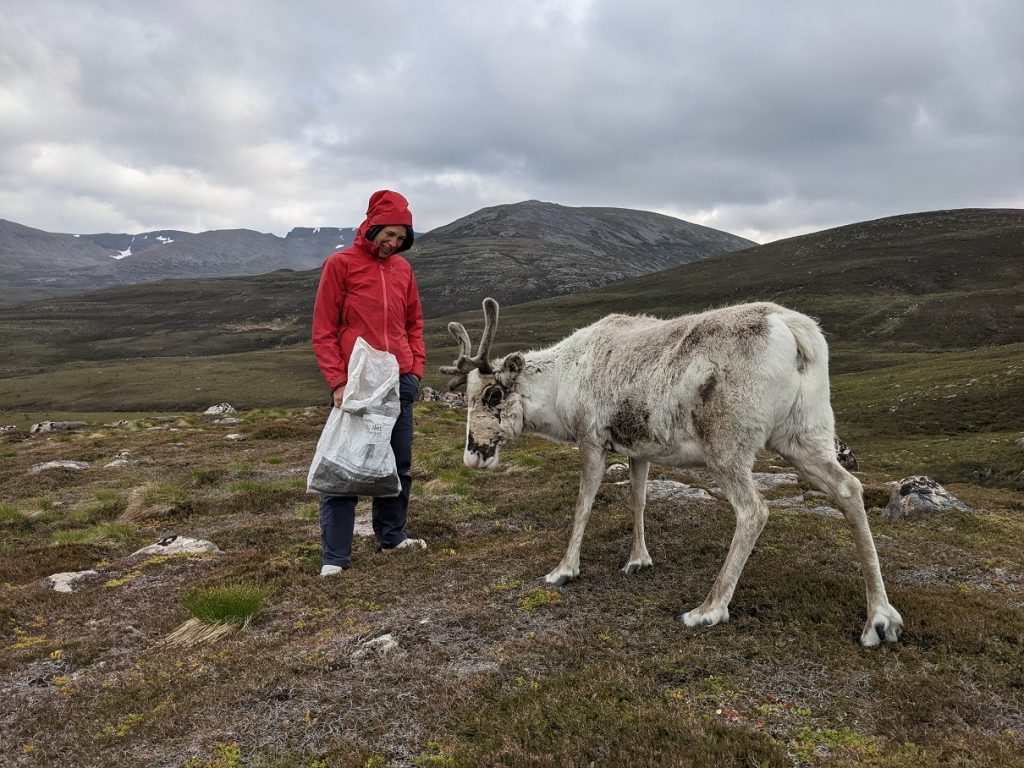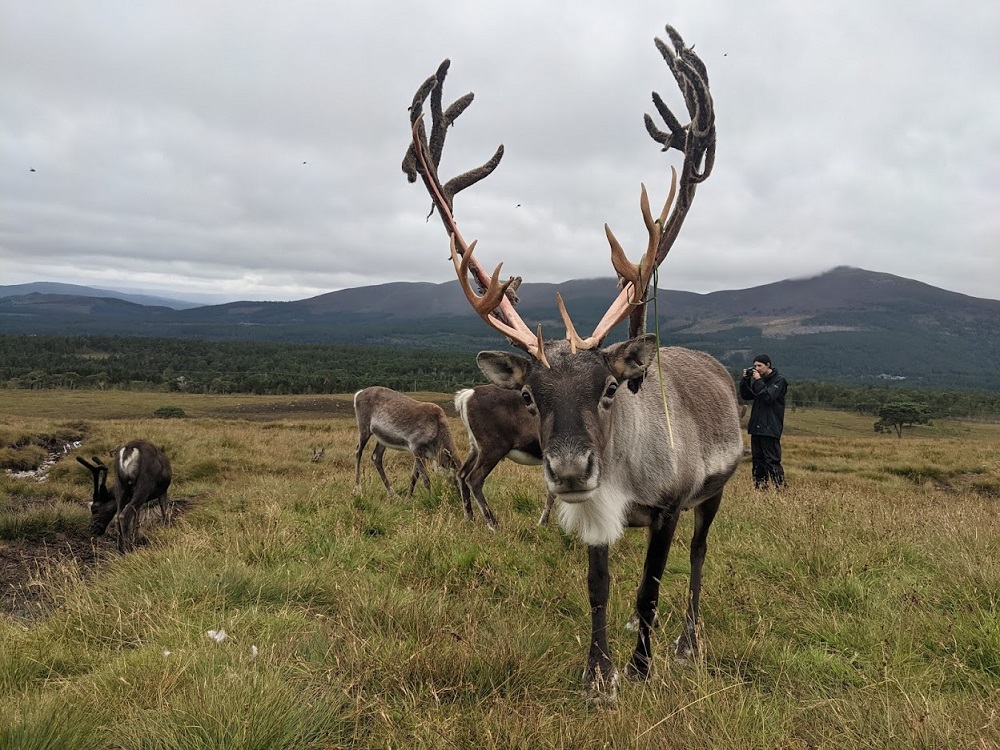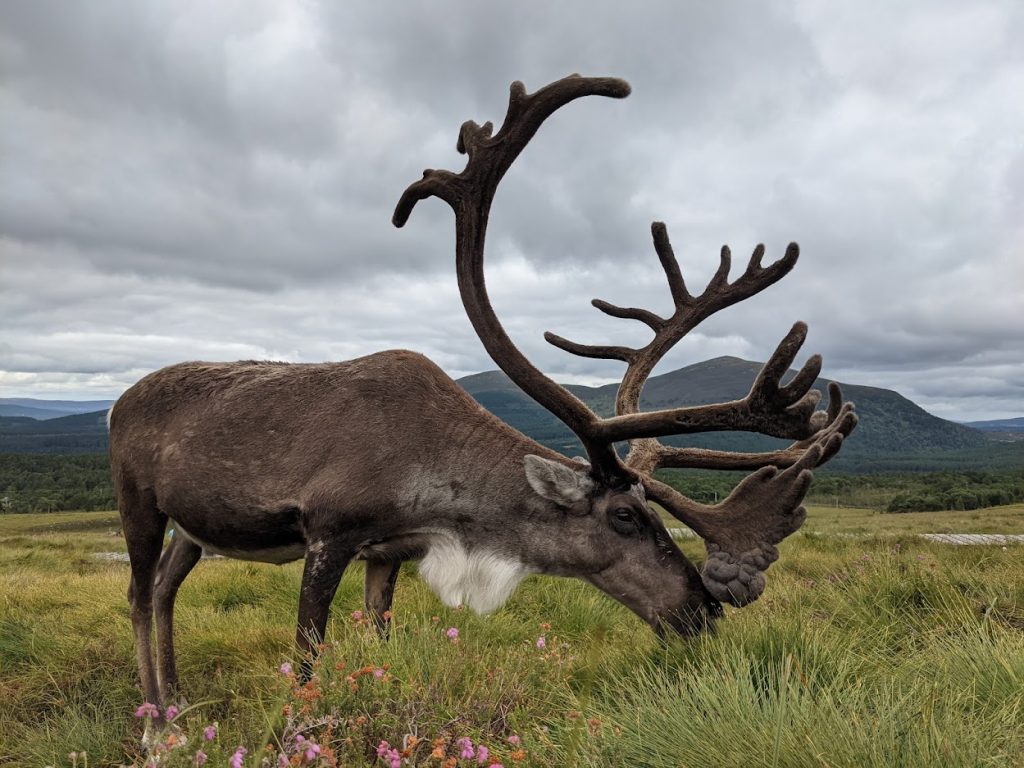We thought it was about time you had an update on our hand reared calves of this year. Back in May, off the back of our calving season, we were left hand rearing two female calves. Last year we raised Sunny, a male calf who lost his mum at only a few days old and this year Alba joined us when she was 3 days old and Winne when she was 10 days old. The two of them are thick as thieves and are always together. They spend the day time up on the hill getting exercise and grazing and also learning to be in amongst the herd and in the evenings they are back down here at the Centre with the paddock reindeer. The reason we bring them off the hill is because they are still getting bottles of milk so this makes it a lot easier for us to do.
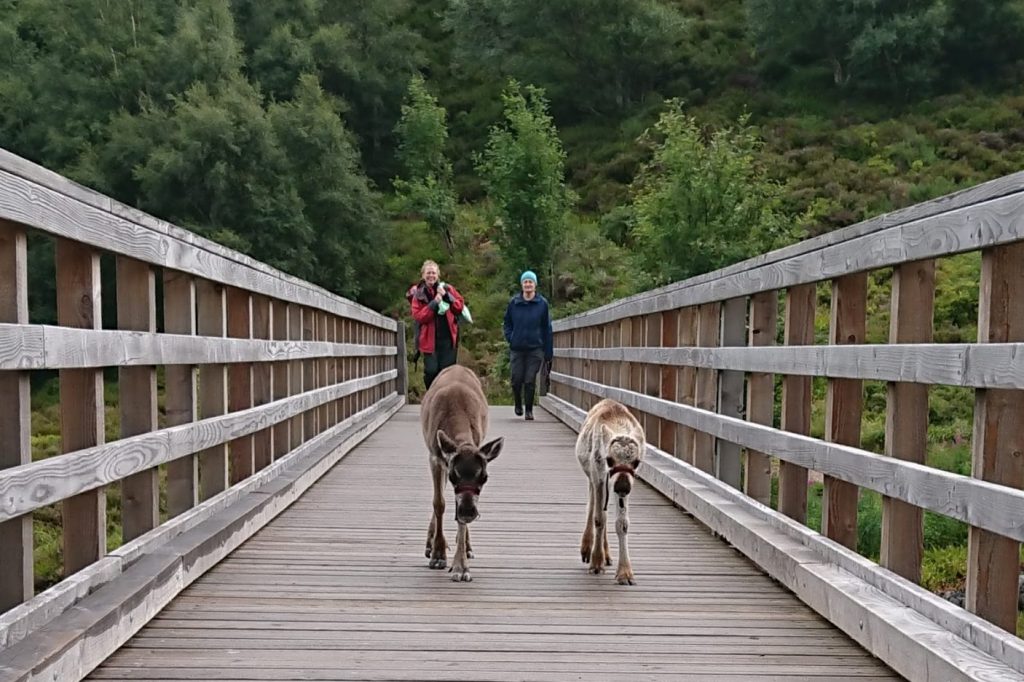
Alba is a twin. Her and her brother were born on the 13th of May 2023 and their mother is Suebi, a 7 year old mature female. We had twins born back in 2018 from Lulu. That was the first time we had twins born alive and with no prior experience we decided to try and leave Lulu with both of them to raise herself. So Lulu spent the summer in our mountain enclosure so we could help her out instead of free ranging with the other cows and calves. Although smaller than normal calves their age both the twins seemed to be doing just fine. However, for what felt like no reason whatsoever we lost one of them at 4 months old and the other one at 5 months old. We don’t know why, maybe reindeer just aren’t meant to raise twins? So, we decided back then if we were to have twins again then we’d need to change something and potentially take one away from the mother leaving her with one to rear herself while we hand reared the other. Alba was the smaller and weaker one of the two born this year. We helped both calves out for the first few days making sure they were getting milk from Suebi then it got to day three and the time had come for us to take one away and leave her with the bigger and stronger calf. Suebi was completely unfazed and satisfied she had a calf. I don’t think the maternal instinct goes as far as counting to two which was lucky for us! We took Alba off the hill and for her first 3.5 days she lived with us and the dogs in the house as she was too small to be with other reindeer at this point.
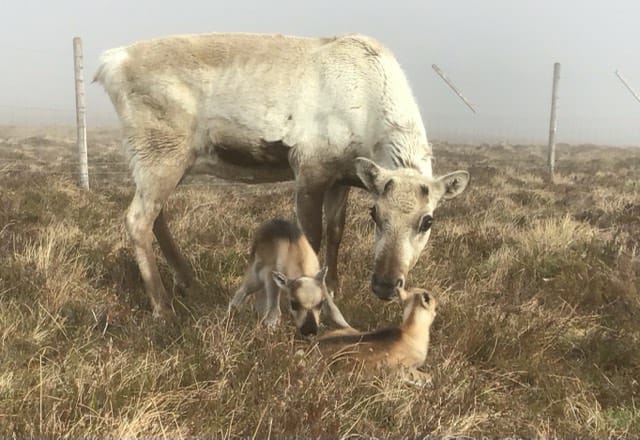

After a few days Winnie came on the scene and the two of them teamed up as our hand reared duo of 2023. Winne’s story is a little different. It was mid-May and she was with her mum for about 10 days before one morning she came in with the herd and mum wasn’t with her. This is very strange because if mum wasn’t feeling well and lay down usually the calf would always stay with her so for the calf to be in without mum was really unusual. Maybe she had an accident or if she did become ill it’s been far too long now that we can only assume she passed away. Obviously we immediately looked for her on the day she went missing, however, our mountain enclosure with is 1200 acres (the equivalent of 1200 football pitches). This is made up of heathery mountain ground, peat hags, lots of trees, bog and thick juniper so it is like finding a needle in a haystack sometimes. It got to the afternoon of the day she went missing and we had to give Winnie some milk or she would have starved. We also had to take her off the hill that night as she would not be able to stay with the herd without a mum so down she came and both her and Alba teamed up.


We laugh as incidents or problems only ever occur when there is something else happening for us herders or when the long term herders are away on holiday. And true to form this all happened during the wedding of two herders so we were already on minimal staff with the long termers away celebrating. The staff that were working that day came up trumps big time to deal with everything though! I did pop back and help out and also pass on advice over the phone but it was the folk on the ground that held the fort and did a bloody good job of it too considering the complications. Also, as it was a herders wedding we of course had the ceilidh to go to that night. While we were all at the party in the evening, who else had to come along… Alba and Winnie, of course! So into our wee livestock truck they went, along with their bottles of milk ready to warm up mid-ceilidh. Then come 8pm, dressed up in my glad rags, off I went to feed the calves. The scene of walking through a wedding party, in a frock, holding two bottles of milk to go and feed the calves should of looked unusual but nobody batted an eyelid. I was definitely in amongst like-minded people!
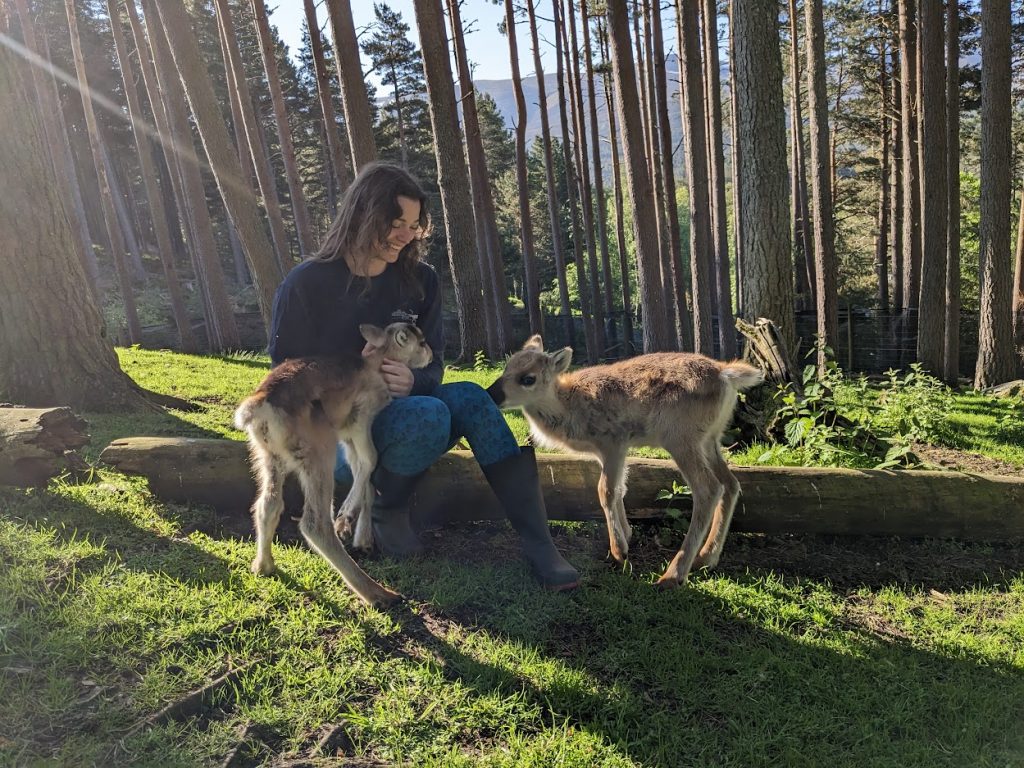

So now we are well into the summer, it’s been a bit of a rollercoaster having two calves to hand rear. For herders living at Reindeer House there is a further responsibility with two extra feeds after working hours so Cameron, Kate, EK, Fran, Hannah and myself have all been doing this. When we hand reared Sunny last year he spent a lot of time hanging out with us in Reindeer House but as there are two calves this year they don’t come in so much. Cameron has certainly adopted the two girls this year having done most of the looking after so when he went away for a week’s holiday in July he had to trust us we would do a good job!

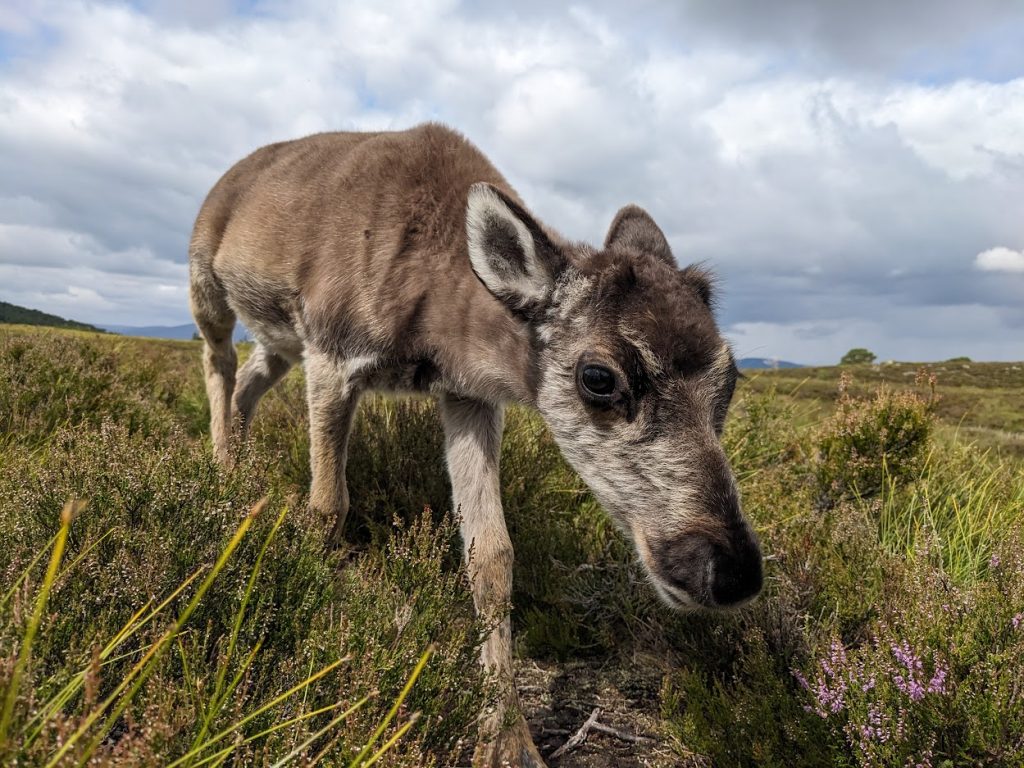

Obviously we’d prefer not to hand rear reindeer calves, however, sometimes there is no option. Sunny is now a year old and I still call out to him in the mornings ‘calf, calf!’ and he even grunts back to me sometimes. This may be a trait which carries on through his life but it certainly gives us a good laugh. Alba and Winnie this year I can already see are going to be naughty little girls. Both coming from quite independent, head strong mothers I think we’ve got out future work cut out with them so watch this space!

Fiona
















